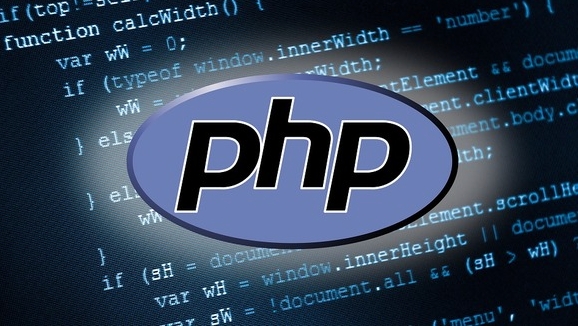 Backend Development
Backend Development
 PHP Tutorial
PHP Tutorial
 how to use array_walk_recursive on a multidimensional php array
how to use array_walk_recursive on a multidimensional php array
how to use array_walk_recursive on a multidimensional php array
Jul 03, 2025 am 10:24 AMarray_walk_recursive() recursively processes each non-array element of a multidimensional array. It will automatically penetrate deep into the nested structure, apply a callback function to each leaf node value, ignoring the empty array and the subarray itself. For example, it can be used to directly modify the values ??in the original array, such as converting all numbers into floating point types. However, it is not suitable for scenarios such as operating keys, returning new arrays, or processing objects. At this time, custom recursive functions should be used to achieve more granular control. When debugging, you need to pay attention to reference passing, type checking, and empty array skipping.

If you're working with multidimensional arrays in PHP and want to apply a function to every element — no matter how deep it is nested — array_walk_recursive() is the right tool. It automatically dives into nested arrays and applies your callback to each leaf value, skipping any sub-arrays themselves.

What does array_walk_recursive() actually do?
This function walks through an array recursively, meaning it goes into each level of nesting. It passes each leaf node (the actual values, not the arrays) to your custom function. The key point: it ignores empty arrays and only touches elements that aren't themselves arrays.

Example:
$multi = [
'a' => [1, 2],
'b' => [3, [4, 5]],
];
array_walk_recursive($multi, function(&$value) {
$value *= 2;
}); After this runs, all numeric values ??will be doubled, even those inside deeper levels like the 4 and 5 inside the nested array.

How to modify values ??in place
One common use is modifying the original array directly. To do that, make sure you're using a reference ( &$value ) in your callback.
Here's a basic pattern:
- Use
array_walk_recursive()with a callback that accepts&$value - Modify
$valuedirectly inside the function
Example:
$data = [
['price' => '10.99', 'qty' => '3'],
['price' => '5.49', 'qty' => '10'],
];
array_walk_recursive($data, function(&$value) {
if (is_numeric($value)) {
$value = (float)$value;
}
});Now all string numbers are converted to floats without looping manually through each level.
When to avoid array_walk_recursive()
There are some cases where this function isn't the best fit:
- You need to manipulate keys or arrays themselves (not just leaf values)
- You want to return a new transformed array instead of modifying in place
- Your structure contains objects or special data types
In these cases, writing a custom recursive function gives you more control.
Custom example:
function deepTransform(&$array, $callback) {
foreach ($array as &$value) {
if (is_array($value)) {
deepTransform($value, $callback);
} else {
$value = $callback($value);
}
}
}
deepTransform($data, function($val) {
return strtoupper($val);
});This way, you can return a modified value and keep better control over what gets changed.
Keep in mind when debugging
Sometimes things don't change as expected. A few gotchas:
- Make sure you're using
&$valuein the callback if you want to modify the original - If your array has non-scalar values ??(like objects), the function will still pass them unless you add type checks
- Emty arrays are skipped silently — so if your data might contain placeholders, handle them before applying the function
You can test by dumping inside the callback:
array_walk_recursive($arr, function($v, $k) {
var_dump($k, $v);
});That helps confirm whether the function is reaching all intended values.
It's a solid one-liner for deeply transforming flat values ??in nested arrays. Just remember it works in place and skips sub-arrays, which makes it fast but limited compared to writing your own loop.
The above is the detailed content of how to use array_walk_recursive on a multidimensional php array. For more information, please follow other related articles on the PHP Chinese website!

Hot AI Tools

Undress AI Tool
Undress images for free

Undresser.AI Undress
AI-powered app for creating realistic nude photos

AI Clothes Remover
Online AI tool for removing clothes from photos.

Clothoff.io
AI clothes remover

Video Face Swap
Swap faces in any video effortlessly with our completely free AI face swap tool!

Hot Article

Hot Tools

Notepad++7.3.1
Easy-to-use and free code editor

SublimeText3 Chinese version
Chinese version, very easy to use

Zend Studio 13.0.1
Powerful PHP integrated development environment

Dreamweaver CS6
Visual web development tools

SublimeText3 Mac version
God-level code editing software (SublimeText3)
 PHP Variable Scope Explained
Jul 17, 2025 am 04:16 AM
PHP Variable Scope Explained
Jul 17, 2025 am 04:16 AM
Common problems and solutions for PHP variable scope include: 1. The global variable cannot be accessed within the function, and it needs to be passed in using the global keyword or parameter; 2. The static variable is declared with static, and it is only initialized once and the value is maintained between multiple calls; 3. Hyperglobal variables such as $_GET and $_POST can be used directly in any scope, but you need to pay attention to safe filtering; 4. Anonymous functions need to introduce parent scope variables through the use keyword, and when modifying external variables, you need to pass a reference. Mastering these rules can help avoid errors and improve code stability.
 How to handle File Uploads securely in PHP?
Jul 08, 2025 am 02:37 AM
How to handle File Uploads securely in PHP?
Jul 08, 2025 am 02:37 AM
To safely handle PHP file uploads, you need to verify the source and type, control the file name and path, set server restrictions, and process media files twice. 1. Verify the upload source to prevent CSRF through token and detect the real MIME type through finfo_file using whitelist control; 2. Rename the file to a random string and determine the extension to store it in a non-Web directory according to the detection type; 3. PHP configuration limits the upload size and temporary directory Nginx/Apache prohibits access to the upload directory; 4. The GD library resaves the pictures to clear potential malicious data.
 Commenting Out Code in PHP
Jul 18, 2025 am 04:57 AM
Commenting Out Code in PHP
Jul 18, 2025 am 04:57 AM
There are three common methods for PHP comment code: 1. Use // or # to block one line of code, and it is recommended to use //; 2. Use /.../ to wrap code blocks with multiple lines, which cannot be nested but can be crossed; 3. Combination skills comments such as using /if(){}/ to control logic blocks, or to improve efficiency with editor shortcut keys, you should pay attention to closing symbols and avoid nesting when using them.
 How Do Generators Work in PHP?
Jul 11, 2025 am 03:12 AM
How Do Generators Work in PHP?
Jul 11, 2025 am 03:12 AM
AgeneratorinPHPisamemory-efficientwaytoiterateoverlargedatasetsbyyieldingvaluesoneatatimeinsteadofreturningthemallatonce.1.Generatorsusetheyieldkeywordtoproducevaluesondemand,reducingmemoryusage.2.Theyareusefulforhandlingbigloops,readinglargefiles,or
 Tips for Writing PHP Comments
Jul 18, 2025 am 04:51 AM
Tips for Writing PHP Comments
Jul 18, 2025 am 04:51 AM
The key to writing PHP comments is to clarify the purpose and specifications. Comments should explain "why" rather than "what was done", avoiding redundancy or too simplicity. 1. Use a unified format, such as docblock (/*/) for class and method descriptions to improve readability and tool compatibility; 2. Emphasize the reasons behind the logic, such as why JS jumps need to be output manually; 3. Add an overview description before complex code, describe the process in steps, and help understand the overall idea; 4. Use TODO and FIXME rationally to mark to-do items and problems to facilitate subsequent tracking and collaboration. Good annotations can reduce communication costs and improve code maintenance efficiency.
 Learning PHP: A Beginner's Guide
Jul 18, 2025 am 04:54 AM
Learning PHP: A Beginner's Guide
Jul 18, 2025 am 04:54 AM
TolearnPHPeffectively,startbysettingupalocalserverenvironmentusingtoolslikeXAMPPandacodeeditorlikeVSCode.1)InstallXAMPPforApache,MySQL,andPHP.2)Useacodeeditorforsyntaxsupport.3)TestyoursetupwithasimplePHPfile.Next,learnPHPbasicsincludingvariables,ech
 How to access a character in a string by index in PHP
Jul 12, 2025 am 03:15 AM
How to access a character in a string by index in PHP
Jul 12, 2025 am 03:15 AM
In PHP, you can use square brackets or curly braces to obtain string specific index characters, but square brackets are recommended; the index starts from 0, and the access outside the range returns a null value and cannot be assigned a value; mb_substr is required to handle multi-byte characters. For example: $str="hello";echo$str[0]; output h; and Chinese characters such as mb_substr($str,1,1) need to obtain the correct result; in actual applications, the length of the string should be checked before looping, dynamic strings need to be verified for validity, and multilingual projects recommend using multi-byte security functions uniformly.
 Quick PHP Installation Tutorial
Jul 18, 2025 am 04:52 AM
Quick PHP Installation Tutorial
Jul 18, 2025 am 04:52 AM
ToinstallPHPquickly,useXAMPPonWindowsorHomebrewonmacOS.1.OnWindows,downloadandinstallXAMPP,selectcomponents,startApache,andplacefilesinhtdocs.2.Alternatively,manuallyinstallPHPfromphp.netandsetupaserverlikeApache.3.OnmacOS,installHomebrew,thenrun'bre





